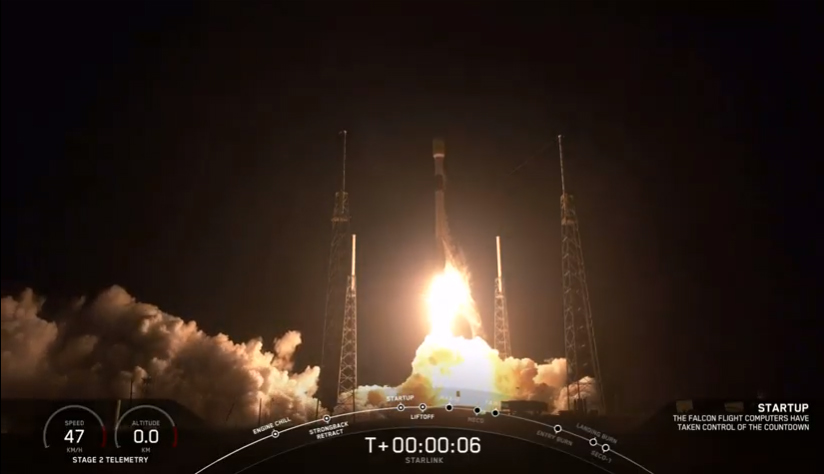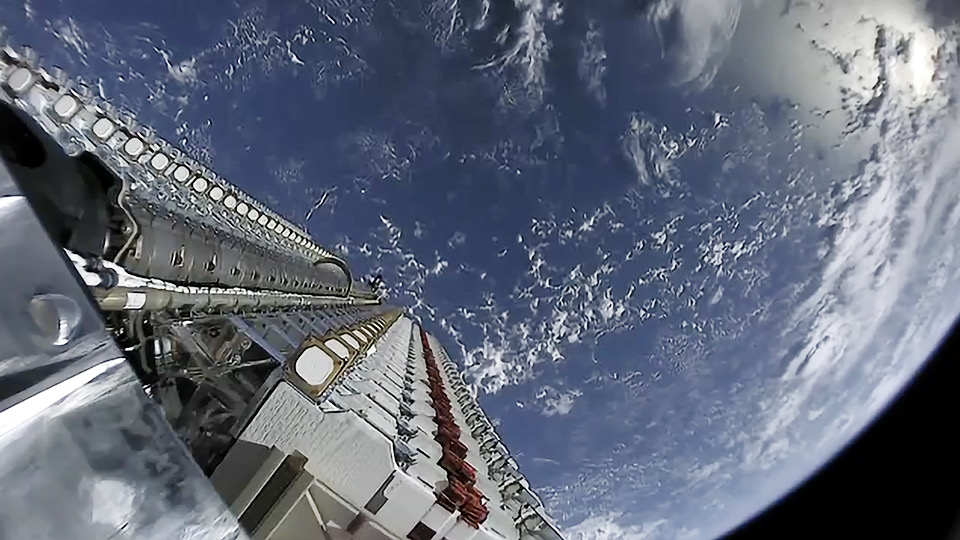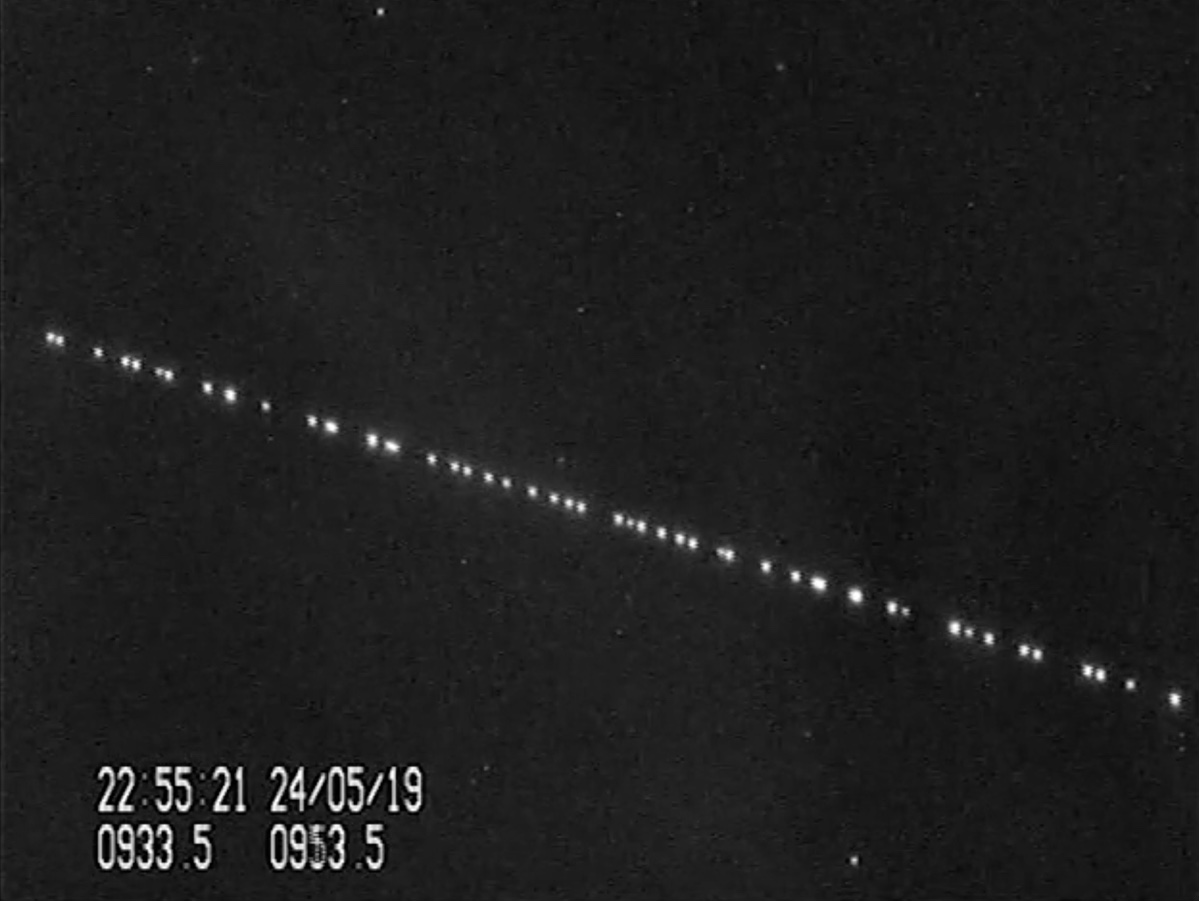SpaceX Test-Fires Rocket for 60-Satellite Starlink Launch, the 1st of 2020
Liftoff is on Monday, Jan. 6!

CAPE CANAVERAL, Fla. — SpaceX on Saturday fired up the rocket that will ferry the company's next batch of Starlink satellites into space.
The company conducted a static-fire test on Saturday (Jan. 4) of a Falcon 9 rocket at Space Launch Complex 40 at Cape Canaveral Air Force Station in Florida, the company said on Twitter. That rocket is expected to send 60 Starlink internet satellites into space no earlier than Monday (Jan. 6), marking the first launch of the year from Florida's Space Coast.
The Falcon 9 rocket out of its hangar on Friday (Jan. 3) and went vertical on the launch pad in advance of the planned test-firing of its nine first stage engines on Saturday. The two-stage rocket is scheduled for liftoff Monday at 9:19 p.m. EST (0219 GMT Tuesday).
Video: See SpaceX's 1st Starlink Satellites in the Night Sky
More: SpaceX's 1st Starlink Megaconstellation Launch in Photos!
But before it can launch, SpaceX put the vehicle through a routine launch rehearsal. The brief test, known as a static-fire test, is a standard part of prelaunch procedures and one of the last major milestones before liftoff. During the test, teams loaded the Falcon’s super-chilled propellants — kerosene and liquid oxygen — into the rocket before igniting the first stage’s nine Merlin 1D engines.
The engines briefly fired at 12 p.m. EST (1700 GMT), generating more than 1 million pounds of thrust while the booster remained firmly on the ground. Engineers reviewed the data before deciding to proceed with the Falcon 9’s planned launch attempt Monday evening.
"Static fire complete — targeting Monday, January 6 at 9:19 p.m. EST for launch of 60 Starlink satellites from Pad 40 in Florida," SpaceX wrote on Twitter shortly after the test.
Get the Space.com Newsletter
Breaking space news, the latest updates on rocket launches, skywatching events and more!
Static fire test of Falcon 9 complete—targeting Monday, January 6 at 9:19 p.m. EST for launch of 60 Starlink satellites from Pad 40 in FloridaJanuary 4, 2020
Falcon 9 first stage booster supporting this mission previously launched a Starlink mission, the Iridium-8 mission, and the Telstar 18 VANTAGE mission pic.twitter.com/QdailzdG4oJanuary 4, 2020
In 2019, SpaceX launched a total of 13 times. The last mission featured a twice-flown Falcon 9 booster soaring for the third time as it carried a heavy-weight communications satellite for a Singapore-based startup and Japanese broadband provider on Dec. 16.
Now, the company will return to loft a third batch of Starlink satellites, on a Falcon that has already flown three successful missions. The rocket, dubbed B1049.4 (an internal SpaceX identifier), previously hoisted another batch of Starlink satellites as well as the Iridium-8 and Telstar 18 VANTAGE missions.

Monday's flight will mark the first launch of the year from Cape Canaveral, as well as the first launch under eye of the newly established Space Force. On Dec. 20, president Donald Trump signed a measure creating the U.S. Space Force as the sixth branch of the military, after a defense bill was passed by the U.S. Senate creating the new branch.
“Space activity is very important to our way of life and people count on us to make a difference,” Brig. Gen. Doug Schiess, Commander of the 45th Space Wing at Cape Canaveral Air Force Station said in an email statement. "Our wing will continue to do what we’ve excelled at for nearly 70 years: we'll continue our mission of providing assured access to space for warfighters and our nation."
Related: See the Evolution of SpaceX's Rockets in Pictures

On board the veteran rocket is SpaceX's third batch of Starlink satellites, designed to provide global internet access. The company launched its first group of 60 in May of last year, followed by an additional 60 in November, and plans for its burgeoning constellation to eventually be more than 40,000 satellites strong. Monday’s launch will bring the current number of satellites up to nearly 180, making Musk’s constellation the largest in orbit.
Musk said SpaceX will need at least 400 Starlink satellites in orbit for "minor" broadband coverage, and 800 satellites aloft for "moderate" coverage. With less than 10 more launches, the company claims it could begin offering broadband service in the United States sometime in 2020.
Weather conditions on Monday are expected to be ideal for launch. Forecasters predict a greater than 90 percent chance of favorable conditions at liftoff, with the only concern being cumulus clouds.
- SpaceX's Starlink Constellation Could Swell by 30,000 More Satellites
- SpaceX's Starlink Broadband Service Will Begin in 2020: Report
- 'Whoa, It Worked': Elon Musk Tweets Via SpaceX's Starlink Satellites
Follow Elizabeth Howell on Twitter @howellspace. Follow us on Twitter @Spacedotcom and on Facebook.

Join our Space Forums to keep talking space on the latest missions, night sky and more! And if you have a news tip, correction or comment, let us know at: community@space.com.

Amy Thompson is a Florida-based space and science journalist, who joined Space.com as a contributing writer in 2015. She's passionate about all things space and is a huge science and science-fiction geek. Star Wars is her favorite fandom, with that sassy little droid, R2D2 being her favorite. She studied science at the University of Florida, earning a degree in microbiology. Her work has also been published in Newsweek, VICE, Smithsonian, and many more. Now she chases rockets, writing about launches, commercial space, space station science, and everything in between.









